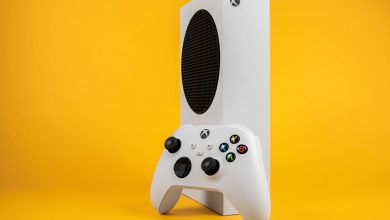The Intel P-Series was a mistake

[ad_1]
It has been difficult to find great laptops this year. That’s partially because 2022 has been a bit of a building year for some companies, especially on the consumer side. It’s also because of the Intel P-series.
I reviewed a number of laptops in 2022 across consumer, workstation, gaming, business, Chromebook, and everywhere else. I touched all of the major brands. But I had a particular focus on ultraportables this year — that is, thin and light devices that people buy to use, say, on their couch at home — because, with Apple’s MacBooks in such a dominant position, many eyes have been on their competitors on the Windows side.
For many of these models, I found myself writing the same review over and over and over. They were generally good. They performed well. But their battery life was bad.
They were generally good. They performed well. But their battery life was bad
What these laptops had in common is that they were all powered by the Intel P-series. Without getting too into the weeds here, Intel processors have, in the past, included H-series processors — powerful chips that you’ll find in gaming laptops and workstations — and U-series processors for thinner, lighter devices. (There was also a G-series, which was this whole other thing, for a couple of years.) But the Intel 12th Generation of mobile chips (that is, the batch of chips that Intel released this year) has a new letter: the P-series. The P-series is supposed to sit between the power-hungry H-series and the power-efficient U-series; the hope was that it would combine H-series power with U-series efficiency.
And then many — a great many — of this year’s top ultraportable laptops got the P-series: big-screeners like the LG Gram 17; modular devices like the Framework Laptop; business notebooks like the ThinkPad X1 Yoga Gen 7; premium ultraportables like the Acer Swift 5, the Lenovo Yoga 9i, the Samsung Galaxy Book2 Pro, and the Dell XPS 13 Plus.
The problem was that, in reality, the P-series was just a slightly less powerful H-series chip, which Intel had slapped an “ultraportable” label onto. It was identical to the H-series in core count and architecture, but it was supposed to draw slightly less power.
If you look at my reviews of these devices, it’s a Tale of Bad Battery Life. Aside from the LG Gram, the 2022 iterations of all of these models have had worse battery life than their 2021 models did. Many of these laptops had not undergone significant changes apart from the chip bumps, which meant that their 2022 models amounted to basically identical but slightly worse versions of their 2021 models.
Okay, so that’s not entirely true. In exchange for the battery life penalty, the P-series was supposed to bring an increase in performance — and it certainly did. Across the board, the P-series delivered much better multicore performance than any of last year’s U-series chips did. And if you put this year’s P-series next to this year’s U-series, the benchmark numbers are higher. But — and I understand that I’m venturing into dangerous territory by saying this — I basically don’t think any of these thin-and-light laptops needed that extra power.
The Microsoft Surface Laptop 5 has a perfectly fine U-series processor inside and gave me close to eight hours of battery life. The Acer Swift 5 had around half of that battery lifespan. There is not a single task I did on the Acer Swift 5 that I wouldn’t have been able to do on the Surface Laptop 5. They both did all my emailing, spreadsheeting, social media-ing, and photo editing just fine. While the Swift 5 may have loaded some pages or expanded some windows ever so slightly faster, the Swift’s terrible battery life was by far the most noticeable difference between the two experiences.
Now, that doesn’t mean everyone who uses these laptops will have my experience. And the difference in multicore processing power could certainly make itself known in heavier use cases, like video work, computation, and possibly gaming. I understand what the pitch for the P-series is — these are presented as laptops for a nebulous “mobile professional” or “modern power user.” Perhaps, the argument continues, the P-series fits these users better.
I guess my question is: how big is that constituency, really? Is there actually a huge critical mass of folks who are: (A) often editing, computing, and gaming on their personal laptop while they’re out and about, but (B) not doing that often enough that they’re sure they don’t need a GPU, and (C) don’t just want to use a MacBook for that?
If you’re a vlogger who’s running around all day, your life will become a never-ending search for outlets
Before you get mad in the comments, I do know that these people exist. I know there are YouTubers who edit on the go, researchers who are at conferences all the time, college students who code in the dining hall, etc. They need something light and may also prefer Windows. But even if the P-series is the perfect amount of power for these people, it’s not a particularly great offering for them, either, because if you’re a vlogger who’s running around all day and editing as you go, I would never recommend you choose a computer that will only get you a few hours of work to a charge because your life will become a never-ending search for outlets. If these folks are choosing the P-series, it’s because its inefficiency is a lesser of two evils, not because it’s the messianic ultraportable chip they’ve been waiting for.
But secondly: is this group actually that large? I’ve used a whole bunch of U-series machines this year, and I’ve been pleasantly surprised by how much they were able to do. I know people who have assumed that, for example, the Surface Pro 9 would be too slow for their Chrome-tab and Excel-heavy workload, only to find that it was perfectly fine. There is some professional work that — if you are doing that work very regularly — I wouldn’t recommend a U-series Core i7 for, but I really think it offers the best sweet spot of power and battery life that most everyone else could ask for.
Given all this, I am not necessarily mad that the P-series exists. I am more unhappy that it ended up powering (and decimating the battery life of) so many of this year’s flagship ultraportable lines. The Dell XPS 13 Plus could’ve been a really groundbreaking computer, but its disappointing battery life was very difficult to ignore. The Framework Laptop was groundbreaking in many ways, but its mediocre lifespan might hinder how well it serves the DIY enthusiasts who purchase it (and yes, you can just stick with the 11th Gen mainboard — but a big part of the Framework’s appeal was supposed to be that you could have fun putting new chips in it).
Across the board, computers that have historically been some of the best you can buy — the Yoga 9i, the ThinkPad X1 Yoga, the Galaxy Book — have fallen off our Best Laptop page in favor of devices powered by AMD and Apple. They are all just a bit worse this year than they were last year. And I think that’s a shame.
[ad_2]
Source link






